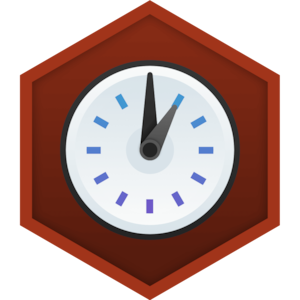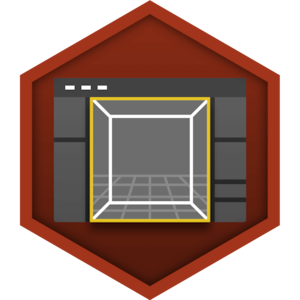Choose your operating system:
Windows
macOS
Linux
Manipulating Actors in Unreal Engine 4 (or Transforming Actors ) refers to the process of moving, rotating, or scaling them and is an important part of the level-editing and creation process. On this page, you will learn how to perform each as well as the different ways you can perform each action. You will also learn some of the commonly used keyboard shortcuts when working with Actors which may improve your workflow.
For this How To guide, we have created a new project using the Blueprint Third Person template with Starter Content enabled. If you have not created a project based off a template before or are not sure how to enable Starter Content, refer to the Project Browser page for information on creating/opening projects, templates, and project settings.
Moving Actors
This section will show you how to move Actors inside the Level Editor Viewport.
-
With your project open, inside the Content Browser , open the Starter Content then Props folder.
![Move1.png]()
-
Left-click on to select the SM_Chair , then drag-and-drop it into the Level Editor Viewport anywhere you would like.
![Move2.png]()
-
When the chair is placed, you will notice it is automatically selected and a Red/Blue/Green arrow widget will appear.
![Move3.png]()
This is the Move Tool and is defaulted to when you place an Actor in your level (or accessed by pressing W with an Actor selected).
The currently active Transform Widget is also shown in the Level Editor Viewport in the upper-right corner of the viewport (below).
![Move8.png]()
Also in this section are grid-snapping options which can be set to determine if the Actor (when moved) will have its movement values snap to certain increments and can be useful for precision placement of objects in your levels.
![Move9.png]()
-
Move the mouse cursor over an arrow on the Move Tool , notice that a new icon appears and the arrow turns yellow.
![Move4.png]()
-
Left-click on and drag one of the arrows in the direction (or reverse direction) the arrow is pointing.
![Move5.png]()
You will notice the icon changes to a closed "grab" icon and you can move the object along the given axis. Movement is restricted to the X (Red Arrow), Y (Green Arrow), and Z (Blue Arrow) Axis when clicking on their respective arrows, this gives you the ability to move an object in one given direction and keep its position in the other directions.
-
Left-click on the white ball at the center of the Move Tool (where the arrows are connected).
![Move6.png]()
This allows you to freely move the Actor along each axis and does not restrict you to a specific axis only.
-
With the Actor still selected, in the Details panel in the lower-right corner of the Editor, you will see the Transform and Location value.
![Move7.png]()
Here you can manually specify a value for X , Y , or Z for the Actor to use.
Rotating Actors
This section will show you how to rotate Actors inside the Level Editor Viewport.
-
Continuing from the Move Actors section above, select the SM_Chair inside the Level Editor Viewport.
-
Press the E key to switch to the Rotate Tool .
![Rotate1.png]()
The widget changes to a set of three color-coded arcs, each associated with one axis that you can rotate the Actor along.
Also notice that your Transform Mode changes to Rotate Mode in the upper-right corner of the Level Editor Viewport.
![Rotate2.png]()
You can also apply grid snapping to rotation to define incremental values at which to rotate the Actor.
![Rotate3.png]()
-
Move the mouse cursor over one of the arcs and notice that the cursor changes and the arc becomes highlighted yellow.
![Rotate4.png]()
This indicates that the Actor will be rotated along the highlighted axis.
-
Left-click and Hold on the arc and notice that the widget changes to reflect only the axis around which the Actor will be rotated.
![Rotate5.png]()
-
Drag left or right to rotate around the arch, rotating the Actor.
![Rotate6.png]()
The amount in which you are rotating the Actor is also displayed for precision rotation.
-
With the chair still selected, inside the Details panel you can manually enter values for Rotation under the Transform section.
![Rotate7.png]()
Scaling Actors
This section will show you how to scale Actors inside the Level Editor Viewport.
-
Continuing from the Move Actors section above, select the SM_Chair inside the Level Editor Viewport.
-
Press the R key to switch to the Scale Tool .
![Scale1.png]()
You will notice that the widget changes to a set of three color-coded handles that end in cubes.
Also notice that your Transform Mode changes to Scale Mode in the upper-right corner of the Level Editor Viewport.
![Scale2.png]()
You can also apply grid snapping to scale to define incremental values at which to scale the Actor.
![Scale3.png]()
-
Move the mouse cursor over one of the handles and notice that the cursor changes and the handle becomes highlighted yellow.
![Scale4.png]()
This indicates that the Actor will be scaled along the highlighted axis.
-
Left-click on and drag one of the handles in the direction (or reverse direction) it is pointing to scale the Actor.
![Scale5.png]()
Above you can see that we have scaled the Actor along the Y axis only.
You can scale the Actor on multiple axis by clicking on the line connecting two axis, then dragging in a direction to scale.
![Scale6.png]()
Typically when scaling things like Static Mesh Actors, you will want to scale uniformly so that it maintains its shape in all directions.
![Scale8.png]()
You can do so by clicking and dragging the white box in the center of the widget (notice how all three handles are highlighted yellow).
![Scale7.png]()
-
With the chair still selected, inside the Details panel you can manually enter values for Scale under the Transform section.
![Scale9.png]()
You can also click the lock icon to scale the Actor uniformly when scaling manually as well.
![Scale10.png]()
This will automatically change the other axis values when one is changed to so that they are equal.
Keyboard Shortcuts
Below are some of the commonly used Keyboard Shortcus when working with Actors.
|
Control |
Action |
|---|---|
|
LMB + Drag (on Transform Tool) |
Moves, rotates, or scales the currently selected Actors, depending on the active transform gizmo. |
|
W |
Selects the Move Tool. |
|
E |
Selects the Rotate Tool. |
|
R |
Selects the Scale Tool. |
|
V |
Toggles vertex snapping which allows you to snap to the vertices of other geometry in the world. |
|
MMB + Drag (on Pivot) |
Moves the pivot of the selection temporarily to offset transformations. |
|
Ctrl + W (on an Actor) |
Duplicates the selected Actor. |
|
H (on an Actor) |
Hides the currently selected Actor. |
|
Ctrl + H |
Un-hides all Actors. |
|
Shift + E (on an Actor) |
Selects all matching Actors in the level of the same type as the selected Actor. |
|
Ctrl + LMB (on an Actor) |
Adds the Actor to a selected Actors pool. |































